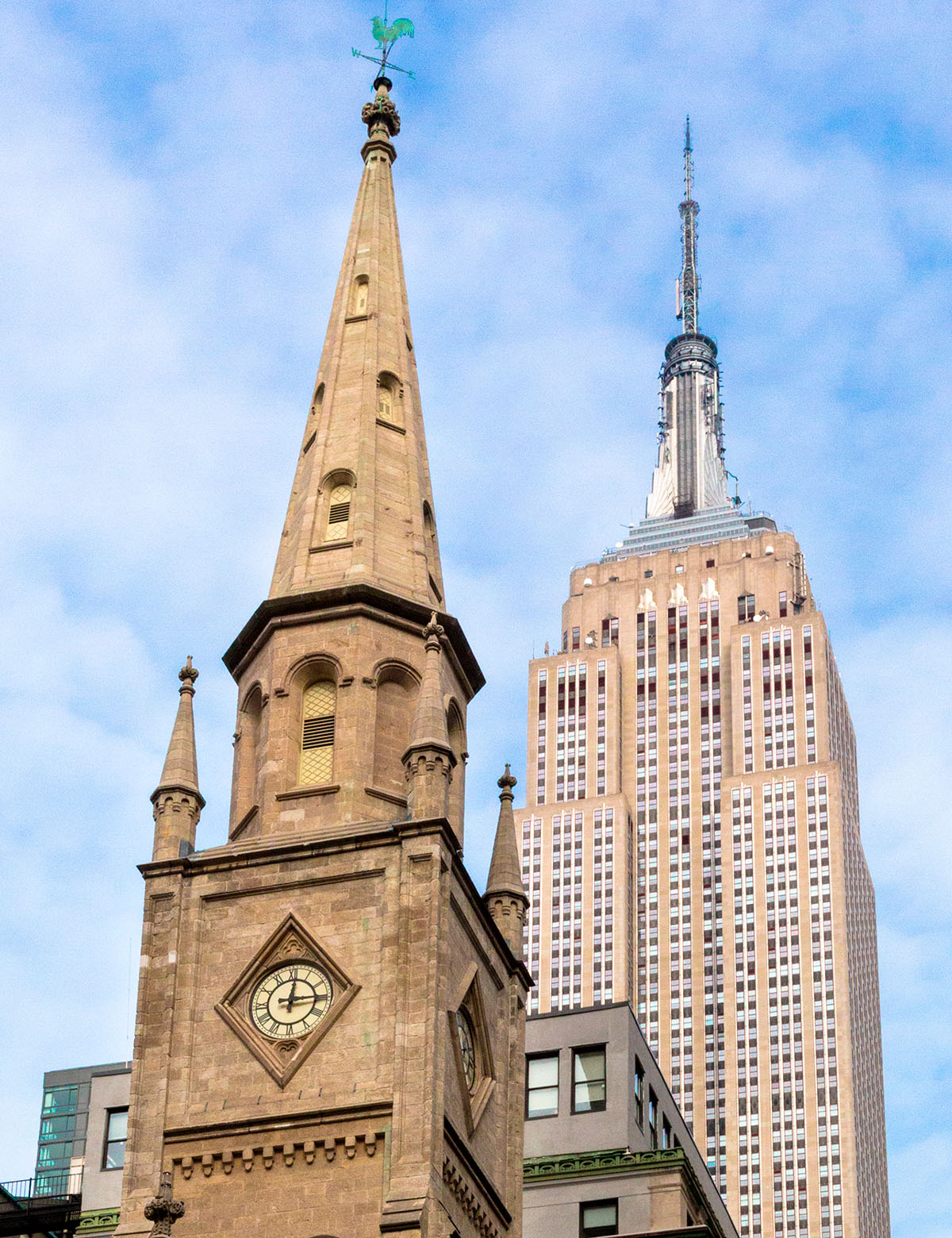
Marble Collegiate Church in NoMad
A landmark of history, progressive thought, and community spirit.
New York City is a place where history, culture, and influence intersect. Nowhere is this more evident than in NoMad, a neighborhood that has long been a crossroads for industrialists, artists, politicians, and everyday New Yorkers. At Fifth Avenue and 29th Street stands Marble Collegiate Church, a landmark of history, progressive thought, and community spirit.
A Legacy of Positive Thinking
For over 50 years, Marble Collegiate Church was led by Norman Vincent Peale, author of The Power of Positive Thinking. His sermons, filled with optimism and actionable wisdom, attracted a diverse congregation, including some of the most prominent figures of the 20th century. Under Peale, the church became an example of hope and forward-thinking spirituality.
Weddings Fit for Headlines
Marble Collegiate Church has hosted numerous high-profile weddings. Comedy legend Lucille Ball married Gary Morton here, while Liza Minnelli wed David Gest in a star-studded ceremony attended by Michael Jackson and Elizabeth Taylor. Donald and Ivana Trump exchanged vows at Marble, as did Julie Nixon and David Eisenhower, uniting two of America’s most prominent political families.
A History Older Than the Nation
Marble Collegiate Church is part of the Collegiate Reformed Protestant Dutch Church, the oldest corporation in the U.S., dating back to 1628. Originally chartered by the Dutch West India Company, it predates the founding of the nation, offering a sense of continuity in a constantly evolving city.
Artistry and Innovation
Beyond its spiritual significance, Marble is an artistic landmark. Its sanctuary houses two original Tiffany stained-glass windows from 1900-1901, with additional narrative windows added in 1998. The church was also the first in New York City to install an electronic organ in 1891, blending tradition with innovation.
The Labyrinth: A Path to Reflection
Beneath its grand sanctuary lies New York City’s only indoor labyrinth, based on the design of the labyrinth inlaid on the floor of Chartres Cathedral in France dating from the thirteenth century. Walking the labyrinth is an ancient Greek tradition, a path designed to help center the soul. Judy Tulin, Coordinator of Pastoral Care, explains, “It’s not a maze, it’s a path – it’s not there to trick you, it’s there to center you.”
Walking the Walk
On a cold, windy evening, I descended into this sacred space, where the Labyrinth awaited. Greeted by friendly docents, I was given a short list of reflective questions: “Why am I doing this walk? What is my intention? What baggage am I bringing?”
Determined to fully embrace the experience, I removed my shoes out of respect and placed my belongings on a chair outside the labyrinth’s perimeter. As I stepped onto the path, I considered the first question: “What am I feeling in my heart and my gut?” Unexpected emotions swelled as I acknowledged the burdens I carried. Slowly, I navigated the winding course, unable to determine exactly where it led, mirroring life’s unpredictability.
Upon reaching the center, I reflected on: “Are you comfortable being right in the middle? Has anything special come to your attention?” I lingered, hoping for revelation, but found only stillness. Maybe clarity comes with time, I thought, as I turned toward the exit. “How does it feel to resume movement? Are you staying true to your intention?” My pace quickened, yet I remained mindful of those still making their way inward.
As I approached the labyrinth’s exit and lifted my head, I let out a quiet gasp. Before me was what looked like the empty shell of a person – my hooded sweatshirt slumped forward, gloves neatly folded on the seat, and unlaced shoes splayed awkwardly beneath. It was as if I had physically shed the weight of what I had carried in. The sight gave me pause. I resisted the urge to photograph it, choosing instead to hold onto the feeling. After some time, I put on my shoes and outerwear and resolved to carry forward the clarity I had found, however fleeting. Before leaving, I ask the docents to pass along my gratitude to Jean Ando, the congregant who led the installation of this permanent marble labyrinth in 2012.
Supporting the Community
Marble Collegiate Church’s legacy is not just about history and celebrity connections – it is about social impact. Under Senior Minister Dr. Michael Bos, the church continues to champion community initiatives. Its Gun Violence Awareness campaign, symbolized by orange ribbons, calls for safer communities nationwide. Through partnerships with P.S. 30 and the “Drive for Dignity” initiative, Marble provides mentorship, essential supplies, and resources to support students and unhoused individuals.
A Gathering Place for All
Marble Collegiate Church transcends boundaries, welcoming all who seek inspiration and connection. Whether drawn by its history, architecture, or community spirit, visitors find an open and inclusive space. Its mission remains steadfast: to serve as a unifying force in an era of division and uncertainty.
Next time you’re in NoMad near Fifth Avenue and 29th Street, step inside Marble Collegiate Church. It’s a living piece of New York City history, an architectural marvel, a place to center yourself, and find community and positive thinking.
